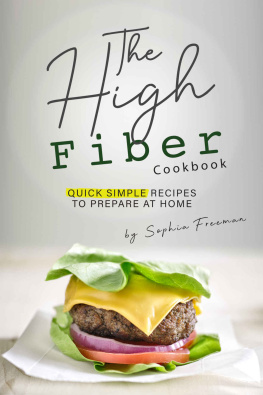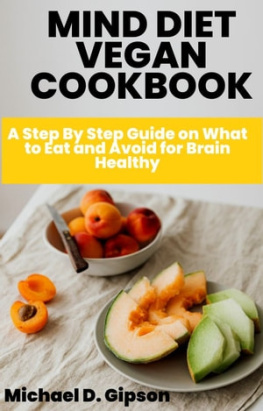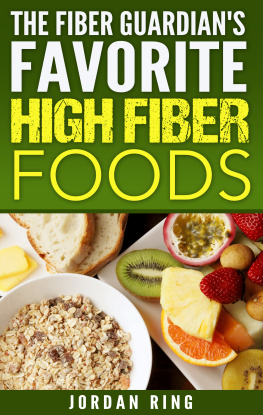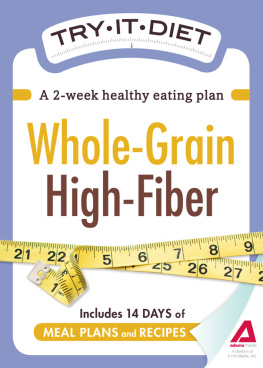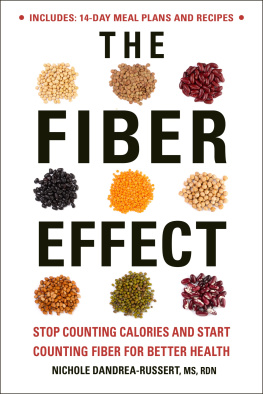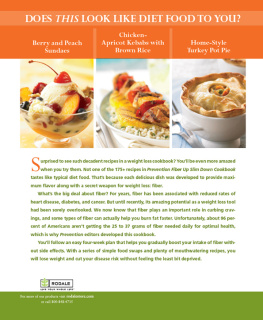500 HIGH-FIBER RECIPES
Fight Diabetes, High Cholesterol, High Blood
Pressure, and Irritable Bowel Syndrome with
Delicious Meals That Fill You Up and
Help You Shed Pounds!
DICK LOGUE

Dedication
In loving memory of my mother, Laura Wright Logue, who got me started cooking, and Im sure is still watching over my efforts.
Table of Contents
INTRODUCTION
Whats All This about High Fiber?
Recently there has been a lot of talk on the news and in other sources about the benefits of increasing the amount of fiber in your diet. Perhaps youve seen or heard some of these reports, and that is why you are looking at this book. If so, you probably have a number of questions. Im going to try to address some of those questions here.
Well look at things like the following:
Why all the talk about increasing fiber? Is this just another diet craze?
What are some of the benefits of a high-fiber diet?
Arent there concerns about and drawbacks to eating a high-fiber diet?
How much fiber should we be eating every day?
How did I end up writing a book of high-fiber recipes?
After weve looked at these questions, will go into detail about how to increase the amount of fiber you eat. Well look at what the best high-fiber foods are; how you can make some simple substitutions when you go shopping to greatly increase the fiber in your diet; and some surprising foods that contain fiber (like chocolate!).
The rest of the book contains 500 recipes that will help you think about ways to get more fiber in your diet. Im not going to give you some meal plan to stick to. The ones Ive seen in other books are not the kind of thing that most people would follow anyway. And they generally only contain a days or at the most a weeks worth of meals. What I am going to do is give you lots of recipes, literally everything from soup to nuts (both of which are usually good high-fiber choices). These arent the kind of recipes that will make you think you are on some strictly regimented diet. They are the kind that you can pick and choose from to add fiber to your diet, while still providing yourself and your family food that tastes good and is like the kinds of things youve always eaten.
Why All This Talk about High-Fiber Diets?
The first question many people are going to have is probably Why am I hearing so much about high-fiber diets lately? First of all, fiber is not a new topic. Dr. John Kellogg, who founded the company that was to become Kelloggs cereal, was a big proponent of fiber in the late 1800s. And Charles Post invented Grape-Nuts, still a popular high-fiber cereal, in 1897. However, fiber has had a bit of an up-and-down history. During the middle of the 20th century it was common to consider fiber a relatively unimportant part of a diet, and it was typically removed from items like white flour.
It is true, however, that talk about fiber has increased in recent years. Part of this is due to the increased awareness of healthy eating over the past 30 or 40 years. Vegetarian cooking tends to be higher in fiber than diets containing meat. And heart-healthy cooking, which is where I got started in creating healthier versions of recipes, also generally includes higher fiber, for reason that well discuss. A number of recent medical studies have also confirmed the medical benefits of high-fiber diets for a number of different conditions. Here are a few:
A study published in the May 11, 2000, issue of the New England Journal of Medicine reported that patients with diabetes who maintained very high fiber in their daily diet lowered their glucose levels by 10 percent.
A 1976 study by the Veterans Administration Medical Center, Lexington, Kentucky, showed that fiber is useful in treating diabetes, high blood pressure, and obesity and in reducing cholesterol levels.
Two studies published in the Lancet showed that people with high-fiber diets suffered from fewer incidents of colon polyps and colon cancer.
So there are a lot of good reasons to add more fiber to your diet, even if you arent currently being treated for a medical condition that requires it. In the next section well look at some of those reasons in more detail.
Why Increase the Amount of Fiber in Your Diet?
So what are the benefits of a high-fiber diet? Lets take a look at some of the more common ones.
Lose Weight
Lets start with this one since its on a lot of peoples minds. If you do a search online, youll find any number of people pushing high-fiber eating as a way to lose weight. And it does work. Well get into more details in the next section, but the short explanation is that by eating more fiber, youll feel more full and want to eat fewer calories. And the bottom line in losing weight is to burn more calories than you eat.
Reduce the Rick of Certain Cancers
A major benefit for everyone is the role that fiber has been shown to have in reducing cancer. I already mentioned the studies that showed people who eat a high-fiber diet have less colon cancer. It appears there are a number of benefits to colon health from fiber. First, it helps to push stools through the colon more quickly, which contributes to overall colon health. Water-soluble fiber also encourages the growth of beneficial bacteria in the colon. And finally, it helps to bind potential carcinogens and excrete them from the body. The bottom line is that the people who eat a high-fiber diet have been shown to have a 40 percent reduction in the risk of colon cancer.
But colon cancer isnt the only cancer that fiber can reduce. Studies done in England have revealed not only that women who eat a high-fiber diet are less likely to develop breast cancer, but also that women who already had breast cancer had a longer life expectancy on a high-fiber diet. And finally, studies have shown a significant reduction in uterine cancer in women who ate a high-fiber diet.
Help the Heart and Circulatory System
Fiber has also had positive effects in fighting heart disease, the number-one killer of both men and women in the United States. Primarily, getting to and staying at a desirable weight reduces one of the biggest risk factors for heart disease. But fiber also contributes in other more active ways. First of all, it helps to reduce cholesterol levels. It does this in several ways. One is by encouraging the production of propionic acid in the intestines, which inhibits the production of cholesterol. Secondly, it removes bile acids from the intestines. In order to make more bile acids, the liver requires cholesterol, which it removes from the bloodstream. The bottom line high-fiber diets have reduced the bad kind of cholesterol, LDL, by 10 to 15 percent.
Help Control Blood Pressure
Another way that fiber contributes to heart and overall health is by reducing high blood pressure. High-fiber diets have been shown to reduce blood pressure by three to seven points, enough to reduce the risk of heart disease by up to 9 percent. Cholesterol reduction contributes to lower blood pressure. Fiber also tends to widen the arteries, reducing the risk of blockage.
Strengthen the Immune System
Fiber can help to keep you healthy by strengthening your immune system. Other diets rely on drastic reductions of food intake. This often has the effect of reducing the number and health of white blood cells. A high-fiber diet, on the other hand, has the opposite effect, strengthening the white blood cells. It also promotes health by increasing beneficial bacteria in the intestines.




